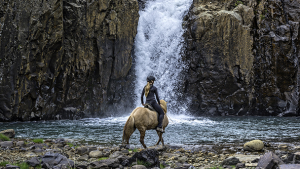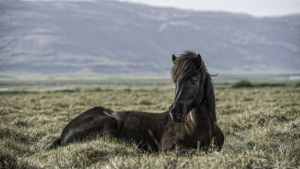The Icelandic Horse: An Island Treasure in the World of Equines.

Iceland is a small island nation located at the juncture of the North Atlantic and Arctic Oceans, between Greenland and Norway. It has a population of around 364,000 people, many of whom live in the capital city of Reykjavik in southwest Iceland. The country has a unique geography, characterized by volcanic mountains, glaciers, plains, waterfalls, geysers, hot springs, and black sand beaches. It is also home to a diverse array of wildlife. Yet, one of the most notable features of Iceland is its horses.
The Icelandic horse has a rich history and culture dating back over a thousand years. The first horses arrived in Iceland with the settlers in the 9th and 10th centuries, and have been bred in isolation on the island ever since. This isolation has led to the development of a unique breed that is well adapted to the rugged terrain and harsh, subarctic climate.

Images : Paula Da Silva
Icelandic horses are an extraordinary breed, cultivated in seclusion for over a millennium. They exhibit remarkable hardiness, are low-maintenance, and have adeptly acclimated to the extreme weather conditions prevalent in their native land.

Images : Paula Da Silva
Historically, Icelandic horses played a pivotal role in transportation and agriculture, serving as the sole mode of travel in the country for numerous centuries. They were integral in herding sheep and cattle and provided vital resources in the form of food and clothing. Their distinctive natural gait, the tölt, enabled them to traverse vast distances swiftly and comfortably, rendering them indispensable for navigating and laboring on Iceland’s challenging landscapes.

Images : Paula Da Silva
In modern times, the Icelandic horse continues to play an important role in Iceland’s culture, economy, and tourism. Horseback riding, racing, breeding, and training are all popular and significant industry contributors, and the country exports the breed – highly valued for its beauty and unique characteristics – around the globe.
Icelandic horses are generally small to medium-sized, standing between 13 and 14 hands. They boast a robust build and sturdy legs, enabling them to effortlessly maneuver Iceland’s challenging landscapes.
Related: Gypsy Vanner horses galloping along the pasture and showing off their charm




